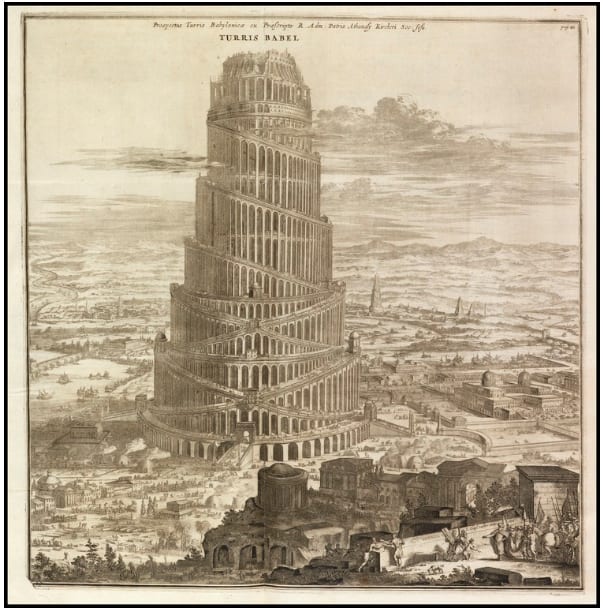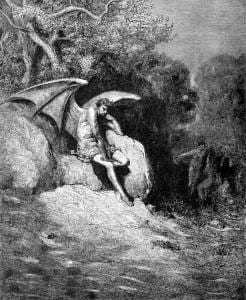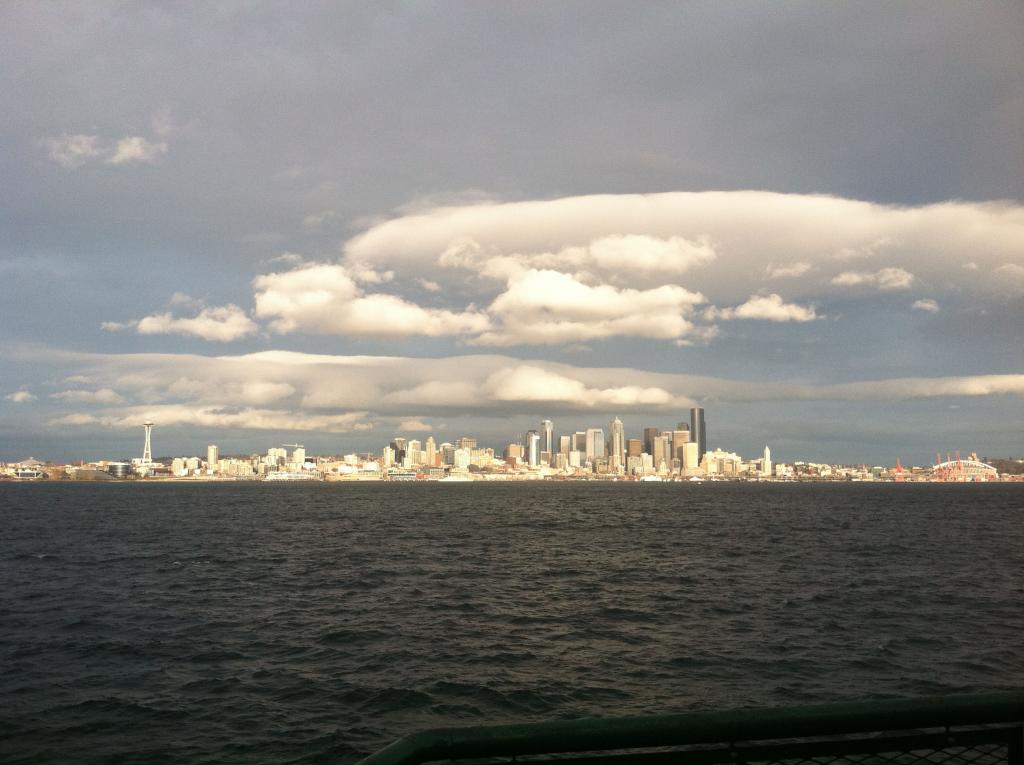In my previous post, I explored the formative influence of narratives in shaping our thinking about technology. In this and the next two posts, I will explore technological narratives of three cities: the primordial City of Babel, the apocalyptic City of New Jerusalem, and the City of Jerusalem in the first century.
This post is about Babel, the story of an early human city that appears in the first biblical book of Genesis.

The story begins when migrants come together on a plain, settle, and use their techniques and tools—their technology—to transform natural materials into bricks and mortar in order to build. They say, “Come, let us build ourselves a city, and a tower with its top in the heavens, and let us make a name for ourselves; otherwise we shall be scattered abroad upon the face of the whole earth.”
Following a pattern of behavior that began millions of years ago, the settlers of Babel are asserting agency over their environment. For thousands of generations, humans used technologies to survive in natural environments. But by 10,000 years ago, humans were creating artificial environments—cultivated lands and cities—to free themselves from the migratory challenges of securing food, shelter, and safety.
From antiquity into the present, the city—with palaces and offices, temples and towers, courts and arsenals, banks and markets, schools and libraries—is an enduring image of technological promise: of political stability, economic prosperity, and cultural development. It promises a place for life together, instead of separately; for a thriving existence beyond one of mere survival; and for being known instead of being forgotten.
But this is an ideal image of the city, a vision only glimpsed in our greatest cities and unrealized at Babel. As the Tower of Babel rises into the heavens, God comes down from the heavens to see this technological wonder—and God is impressed. God says, “this is only the beginning of what they will do; nothing that they propose to do will now be impossible for them.” What happens next is a mystery commentators have been exploring for millennia: God determines to confuse the one people’s one language, to halt their progress, and to make them migrants again.
On one level, this narrative reflects ambivalence about the trajectory of the agricultural revolution. Were we better off as foragers? In some ways, we may have been. On another level, the fall of the Babel recalls the warning about unrestrained progress after Adam and Eve’s illicit gain of godlike knowledge of good and evil in the Garden of Eden. In Babel, as in Eden, human creativity comes with constraints.
Babel is, as most commentators conclude, a story about hubris. It is also a story about transgressing limits that aren’t always evident. While certainly every sin from idolatry to slavery was present in the Tower of Babel, none are named in the judgment against Babel.
The story of Babel is an acknowledgement of the limits of human agency and of the need for technological humility.
Babel contributes to technological narratives of suspicion—of Desire, Hope, the Sacred, and Alienation. Desire leads to the fall, and Hope is frustrated for it is hope in the wrong thing. The Sacred is, inscrutability, violated and hubris is turned into humility. Alienation—from God, others, and nature—is exacerbated.
But the narrative of Babel is situated within a larger biblical narrative, and this narrative has much more to say about the relationship between humans, technology, nature, and God. In the next post, I will look at an inversion of the City of Babel in the apocalyptic City of New Jerusalem.












